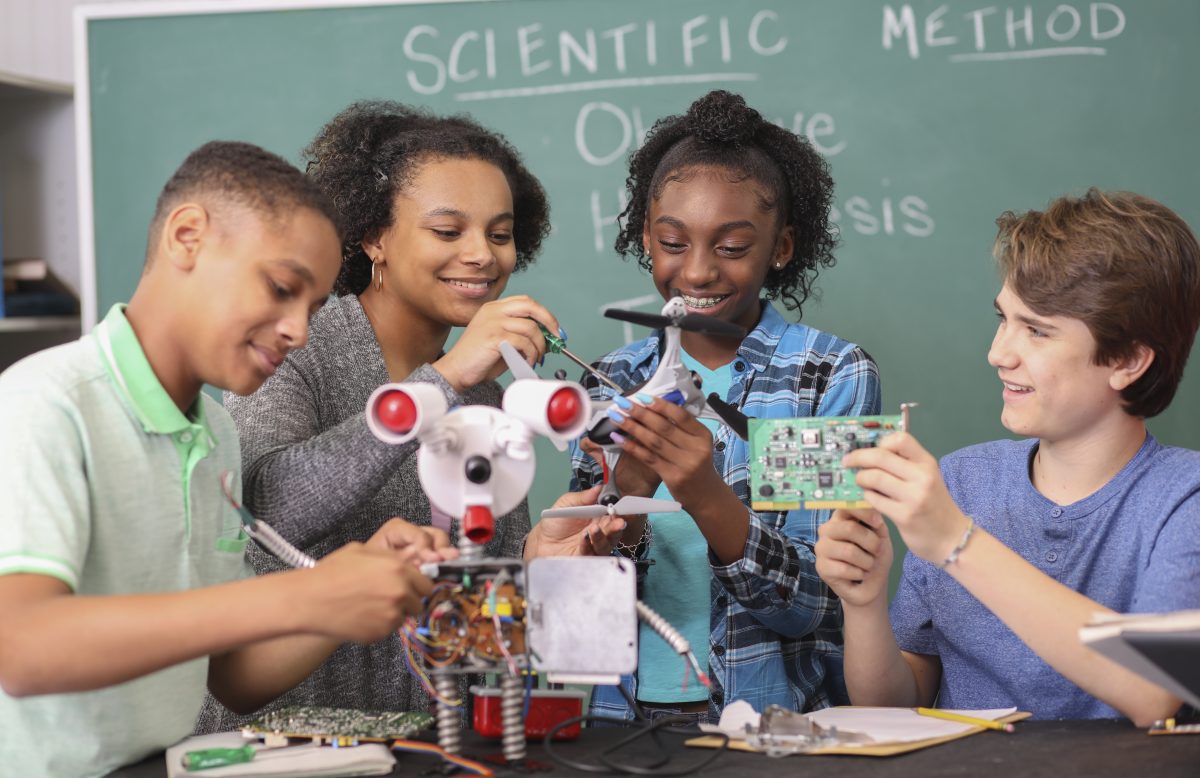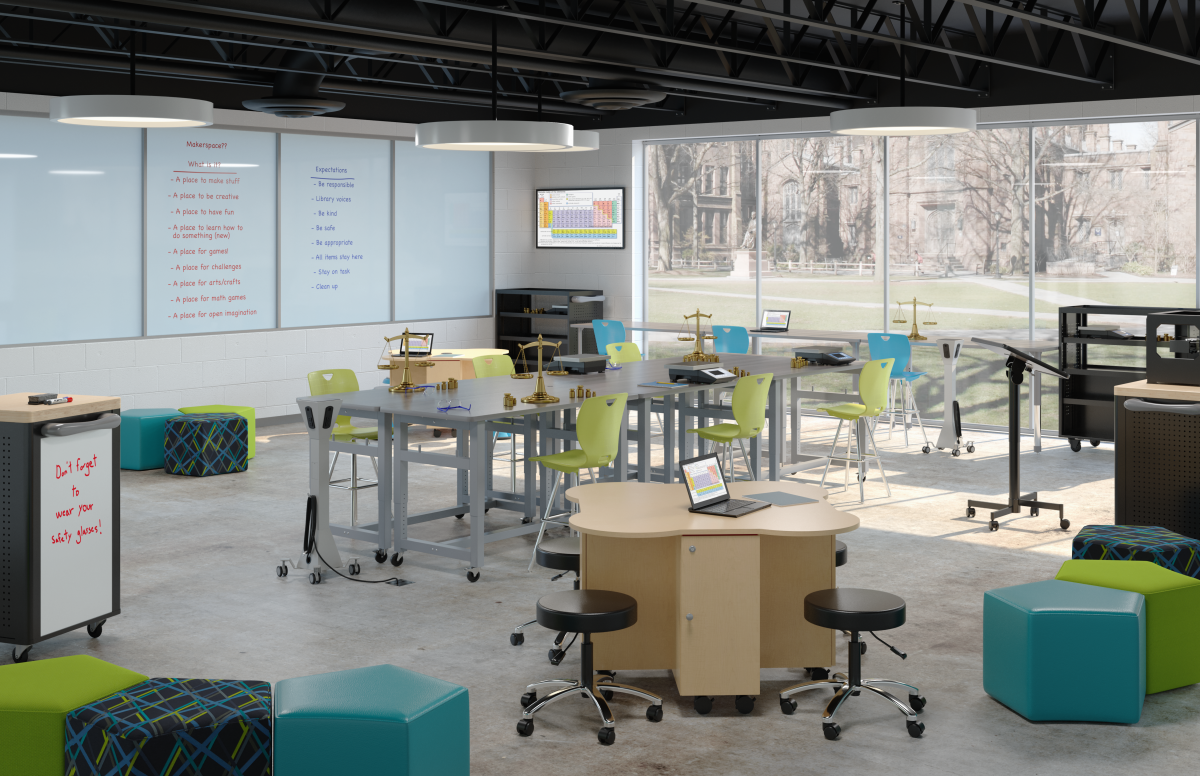
Once I taught science to highschool college students in Oklahoma, I might typically arrange my classroom in a method that piqued college students’ curiosity as quickly as they walked by means of the door.
If we had been beginning a unit on forensic science, for example, I would stage a criminal offense scene in the midst of the room, cordoned off by yellow crime scene tape. If we had been finding out the mobile constructions of assorted organisms, I would challenge a hanging picture on the board on the entrance of the room.
I needed my college students to get enthusiastic about what they had been about to be taught that day: “Are we actually gonna do this?” Something to spark their curiosity and seize their curiosity from the second they entered the room.
We’re all born naturally curious concerning the world. Sadly, too typically college students lose that sense of curiosity as they advance by means of their formal training.
Science, expertise, engineering, arts, and math (STEAM) instruction supplies an ideal alternative to rekindle this pure inquisitiveness. When completed nicely, it will probably faucet into the marvel and awe we really feel in response to the world round us. However this will solely occur with the correct tutorial method.
Clearly, the way in which classes are structured and offered performs a vital position in delivering participating and efficient STEAM instruction. However the design of the educational setting can be a key issue.
What Ought to Excessive-High quality STEAM Training Look Like
Delivering high-quality STEAM instruction is important for a lot of causes.
Participating college students in STEAM studying exposes them to necessary profession pathways and future job alternatives. It helps them turn into adept at fixing all types of issues they may encounter, no matter what profession path they select. It prepares them to be efficient world residents
as a result of their potential to contribute to an more and more complicated society relies on STEAM literacy. And it helps them perceive that it’s okay to fail: Their first few approaches to fixing an issue won’t work, however they’ll be taught from these failures and maintain attempting. (It took Edison 2,774 makes an attempt to design the filament that made the lightbulb a business success.)
For college students to get probably the most out of their STEAM studying experiences, listed below are 4 key qualities these experiences ought to share:
- Arms-on: Excessive-quality STEAM studying experiences put college students within the driver’s seat by having them interact in studying by doing.
- Inquiry-based: STEAM studying experiences ought to be pushed by questions that college students are challenged to reply or issues they’re requested to resolve. The very best questions and issues ought to be complicated in nature, requiring rather more than a easy response that may be discovered by looking out Google.
- Genuine: The issues that college students are tasked with fixing ought to be grounded in genuine, real-world eventualities, so the educational is related to college students’ lives and to precise STEAM careers.
- Collaborative: College students have to discover ways to work collectively to reply questions and resolve
issues. Collaboration is a vital workforce ability for achievement in any job, and the STEAM disciplines lend themselves to collaborative studying experiences wherein college students work in small teams to perform duties.
Designing Efficient STEAM Studying Areas
How a classroom or different studying house is designed, furnished, and geared up has a major impact on the kind and high quality of instruction that takes place there.
A well-designed setting can facilitate STEAM instruction by successfully supporting wealthy, participating studying experiences that share these key traits. Then again, a poorly designed setting could make high-quality STEAM instruction tougher to attain.
Listed below are 5 ideas for designing school rooms, labs, and different studying areas that interact college students in STEAM training that’s hands-on, inquiry-based, genuine, and collaborative.
1. Create Open, Versatile, Multi-use Areas
Take into consideration how one can make these areas as versatile and adaptable as potential. Ideally, college students ought to be capable to shift seamlessly from one kind of studying exercise to a different. One approach to accomplish this aim is by furnishing STEAM studying areas with movable, versatile furnishings that may be reconfigured simply to assist quite a lot of pupil groupings and studying duties.
For instance, desks, tables, and chairs with built-in casters or ball glides could be moved across the room shortly. And desks which are configured in a number of configurations can assist completely different group sizes for collaborative studying.

2. Encourage Arms-On Studying and Exploration
For STEAM studying environments to assist hands-on studying, college students will want loads of house to maneuver round and work safely. It’s exhausting to create superb studying experiences inside a small house.
College students can even want age-appropriate supplies and actions that assist hands-on studying and exploration. For youthful college students, these may embody sensory science facilities or exploration stations; for older college students, they may embody STEM studying kits or robotics and coding kits.
As well as, older college students will want energy and connectivity to assist the applied sciences they’re utilizing. As an example, this adjustable-height exercise desk facilitates collaboration and features a built-in energy supply within the heart for college kids to plug of their cellular gadgets and different applied sciences.
3. Take into account Components Such As Workspaces, Storage, and Security
College students will want work surfaces to finish hands-on tasks, they usually’ll additionally want locations to retailer their supplies. Furnishings that comprises built-in storage choices, comparable to this cellular STEAM desk for younger kids, can save house and make smaller studying environments extra practical. As well as, think about heavy-duty challenge tables with shelving and energy wire group to assist built-in-storage and spacious work surfaces.
Pupil security is a vital consideration as nicely. What particular security tools will you want? Is the house well-ventilated? Does it have loads of gentle? Are there clear walkways between all workspaces, tools, and exits?
4. Spend money on Trendy Instruments and Tools
Speak with STEAM-based companies in your space to be taught what varieties of recent instruments and tools their staff use each day. Clearly, high-end lab tools could also be cost-prohibitive for Okay-12 colleges, however gadgets comparable to 3D printers, spectrometers, and high-powered microscopes are definitely inside attain.
The extra genuine the experiences are for college kids in STEAM school rooms, the higher ready they’ll be for skilled environments after they graduate—and the extra motivated they’ll be to excel.
5. Embrace Chaos
When STEAM studying is hands-on, inquiry-based, related to genuine challenges and careers, and occurs inside a collaborative and supportive studying setting, the outcomes could be superb.
Take into consideration these elements as you design school rooms and different environments that facilitate high-quality STEAM studying experiences. And don’t be afraid to embrace chaos.
When completed appropriately, STEAM studying isn’t neat and tidy. It’s messy, experimental, and stuffed with trial and error. As educators, we should give college students the house to check out their concepts, fail, and be taught from their experiences.
To be taught extra, go to Stem – Steam | College Specialty.

Heidi Launius is a topic knowledgeable in science for College Specialty. She has greater than 17 years of expertise as a STEAM
educator.

